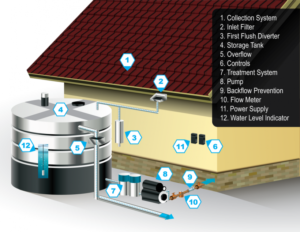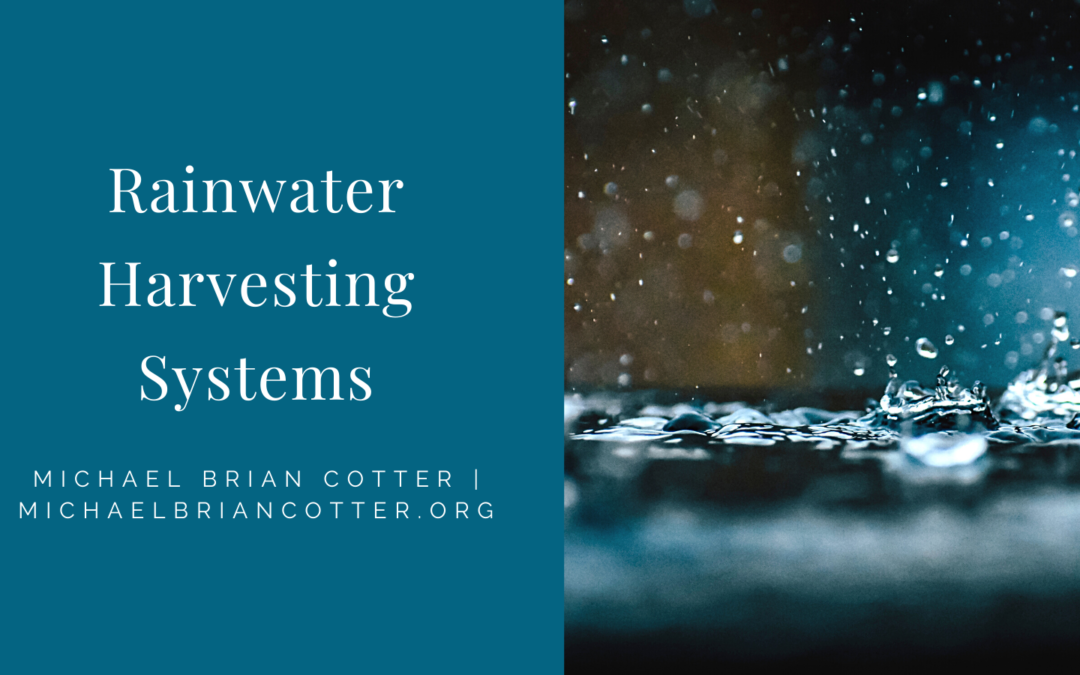We’re constantly looking for suitable alternative water technologies, especially those that can be relevant to a federal facility, can be made commercially available, and can offset freshwater use. However, the Federal Energy Management Program has found that rainwater harvesting systems fit these needs.
Technological Description
Alternative water is most well known as different types of sustainable sources of water that aren’t fresh surface water or groundwater. Overall, this offsets the demand for fresh water, as it harvests water from different sources.
Rainwater harvesting, for example, stores the rainwater that collects on rooftops for later use, generally for things like landscape irrigation, ornamental pond and fountain filling, cooling tower make-up water, and urinal water for flushing. Not only that but it can also be treated with additional filtration and disinfection to become potable.
Components of a rainwater harvesting system

There are a number of working parts in a rainwater harvesting system that all need to be addressed:
- Collection system: Where rainwater is captured to send to the storage system
- Inlet filter: A screen that’s used to filter out large debris
- First flush diverter: A diverter is used to remove debris that the inlet filter hasn’t captured
- Storage tank: a tank that contains FDA-approved green polyester resin material that helps reduce bacterial growth
- Overflow: Used for overflow if the storage take becomes full
- Controls: a system that’s used to monitor the water level as well as the filtration system
- Treatment system: A system that filters and disinfects the water to either potable or non-potable standards.
- Pump: A pump to move water to where it will be used
- Backflow prevention: A way to make sure that water won’t flow back into the make-up water system
- Flow Meter: A device with a data logger that measures water production
- Power supply: Rainwater harvesting systems can use either conventional power sources or alternative sources such as solar systems
- Water level indicator: Monitors the water level in the storage tank.
Technological considerations
When planning for a project such as this, there are several considerations you need to take into account. For one, your endgame is one of the most important things to keep in mind, as it tells you what treatment your water will need. Site location is another essential part, as you don’t want to pick a location that doesn’t get enough water to justify putting in a system. Choosing a place that allows for many uses for the water collected is also essential– this can be vehicle wash, landscape irrigation, or dust suppression.
